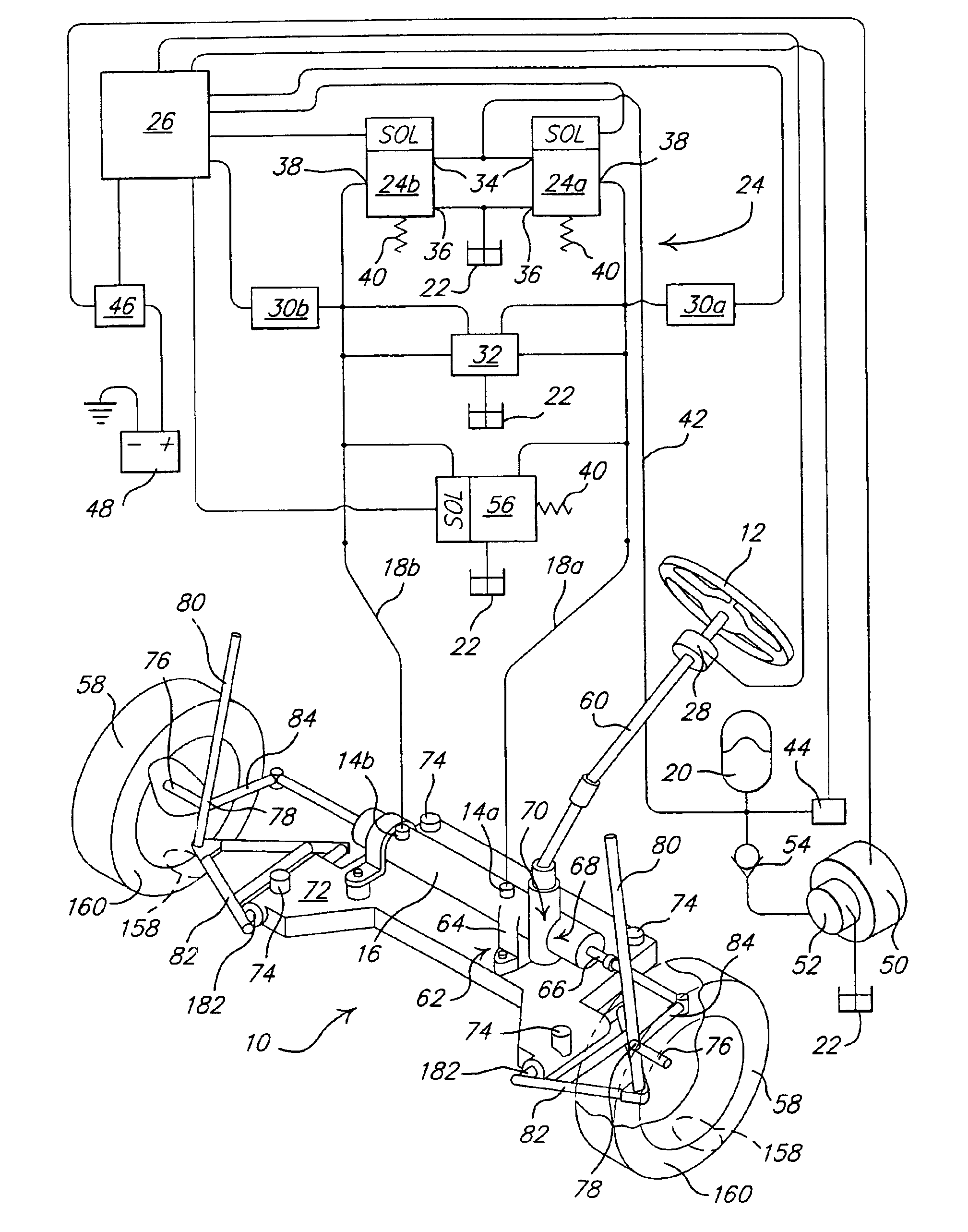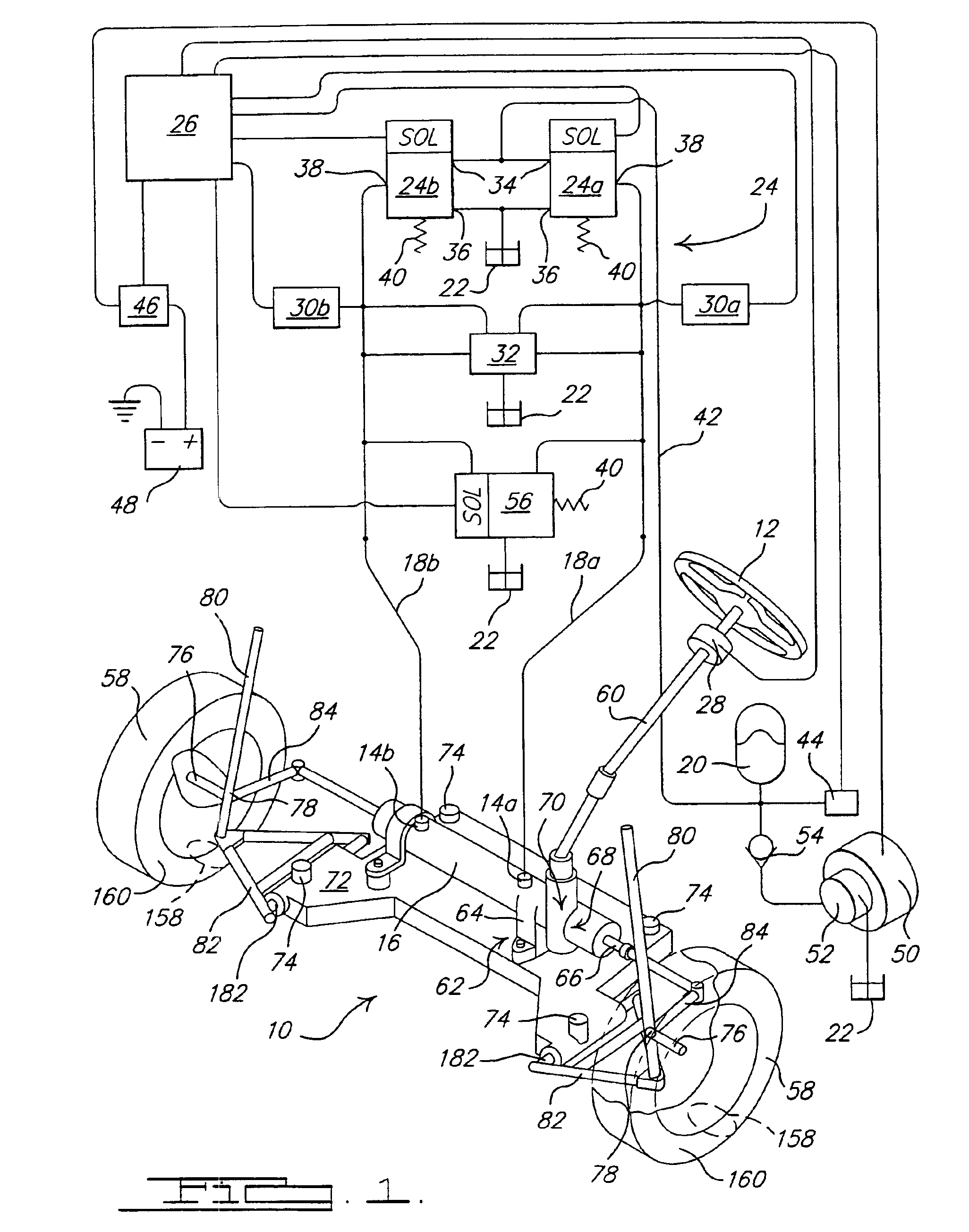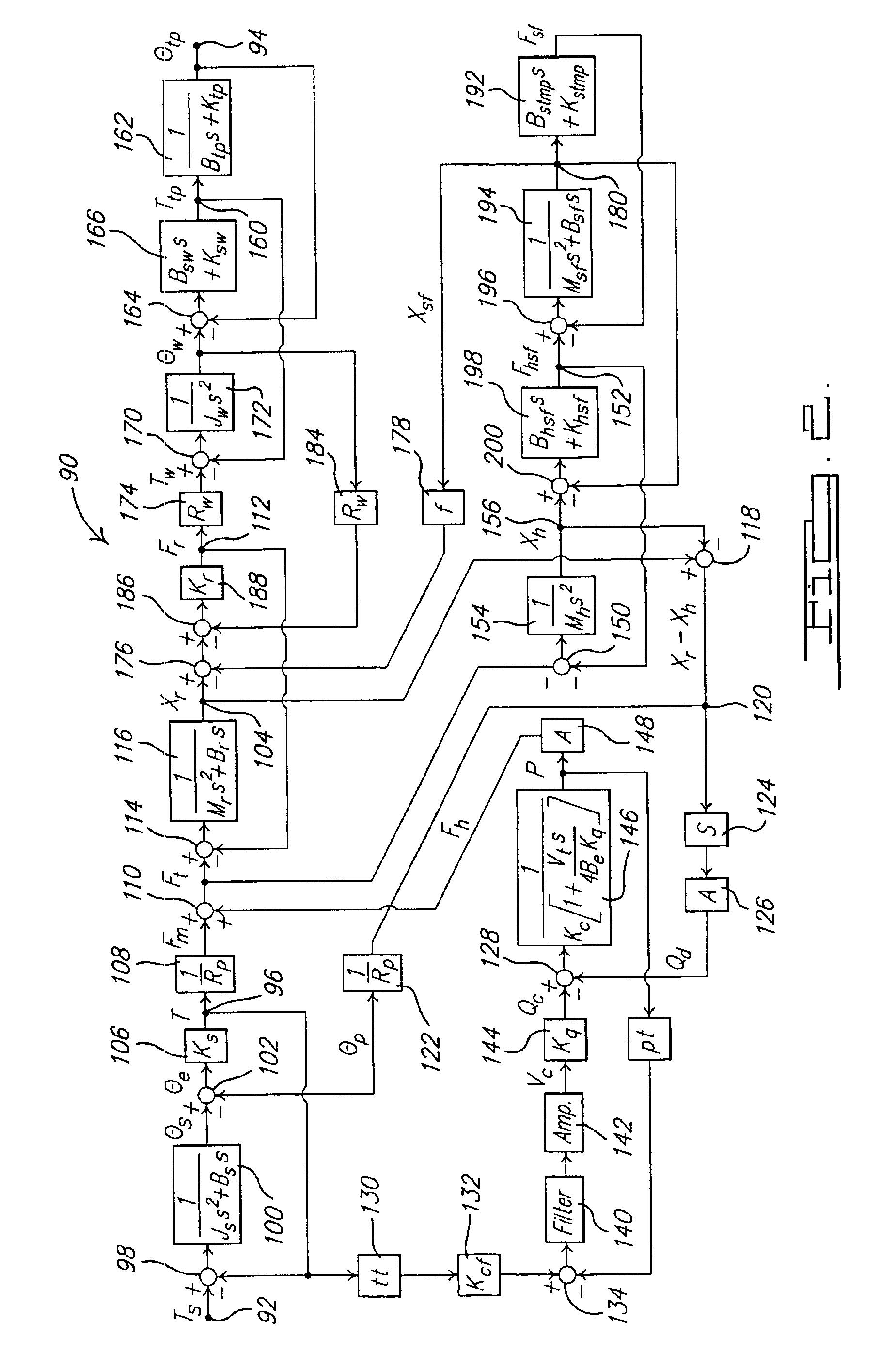Force-based power steering system
- Summary
- Abstract
- Description
- Claims
- Application Information
AI Technical Summary
Benefits of technology
Problems solved by technology
Method used
Image
Examples
Embodiment Construction
[0028]The present invention is directed to method and apparatus for enabling an accumulator and closed-center valve enabled power steering system to function in the manner of a force-based power steering system. With reference first to FIG. 1, there shown is a schematic view depicting operative elements of a power steering system 10 wherein torque applied by a driver to a steering wheel 12 results in differential pressure being applied to first and second ports 14a and 14b of a double-acting power cylinder 16 via first and second fluid lines 18a and 18b, respectively. Controlled amounts of pressurized fluid issuing from an accumulator 20 or returning to a reservoir 22 are metered to or from first and second fluid lines 18a and 18b via an electronically controlled closed-center control valve assembly 24 in response to control signals issuing from a controller 26.
[0029]The accumulator 20 is initially and then intermittently charged with fluid such that the accumulator fluid pressure i...
PUM
 Login to View More
Login to View More Abstract
Description
Claims
Application Information
 Login to View More
Login to View More - R&D
- Intellectual Property
- Life Sciences
- Materials
- Tech Scout
- Unparalleled Data Quality
- Higher Quality Content
- 60% Fewer Hallucinations
Browse by: Latest US Patents, China's latest patents, Technical Efficacy Thesaurus, Application Domain, Technology Topic, Popular Technical Reports.
© 2025 PatSnap. All rights reserved.Legal|Privacy policy|Modern Slavery Act Transparency Statement|Sitemap|About US| Contact US: help@patsnap.com



